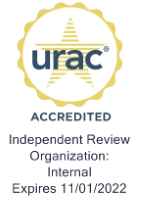Compliance, Fraud, Waste & Abuse
Hierarchical condition category (HCC) Coding Reviews

Hierarchical condition category (HCC) ) relies on ICD-10 coding to assign risk scores to patients. HCC is becoming increasingly prevalent as the healthcare reimbursement environment shifts to value-based payment models. Along with demographic factors (such as age and gender), health plans use HCC coding to assign patients a risk adjustment factor (RAF) score. A patient’s RAF score predict costs.
Summary
There are several instances where HCC coding is required. Take for example Medicare’s Primary Care First (PCF) program which builds on Medicare’s CPC+ Track & Medicare’s CPC+ Track 2 program. PCF assigns a Practice Risk Group Score that equates to $24 per Medicare beneficiary per month for a physician that scores the lowest average HCC score and assigns a Practice Risk Group Score of $175 per Medicare beneficiary per month for a physician that scores the highest average HCC score.
SFUR charges an hourly rate and can link the hourly rate to a certain number of charts audited per hour.
SFUR’s coders map each HCC to an ICD-10 code. The objective of an HCC coding effort is to assign patients a risk adjustment factor (RAF) score. For each record audited, the following steps will be taken:
-
- Review and audit the record
- Map each HCC to an ICD-10 code
- Assign patient a RAF score
After these steps, the following analysis will be performed
-
- Identify documentation for improvement and education
- Target areas that are frequently missed for HCC
- Prepare profiles for each provider to assess areas for further need and assistance in capturing HCC
- Educate providers and staff to improve documentation that supports improved capture of HCC
- Provide high level and detail reporting of results.
Example
For example, a patient with few serious health conditions could be expected to have average medical costs for a given time. However, a patient with multiple chronic conditions would be expected to have higher health care utilization and costs.
Hierarchical condition category coding provides a more precise assessment of a patient’s complexity. In addition to helping predict health care resource utilization, RAF scores are used to risk adjust quality and cost metrics by accounting for differences in patient complexity, quality.
